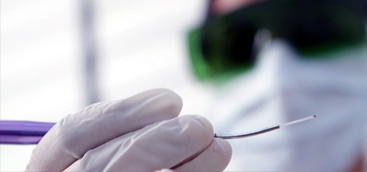
Background Noninvasive techniques for skin rejuvenation are quickly becoming standard in the treatment of mild rhytids and overall skin toning. Multiple laser wavelengths and modalities have been used with varying degrees of success, including 532-nm, 585-nm, 1064-nm, 1320-nm, 1450-nm, and 1540-nm wavelengths.
Objectives To evaluate a combination technique using a long-pulsed, 532-nm potassium titanyl phosphate (KTP) laser and a long-pulsed 1064-nm Nd:YAG laser, separately and combined, for noninvasive photorejuvenation and skin toning and collagen enhancement and to establish efficacy and degree of success.
Design Prospective nonrandomized study with longitudinal follow-up.
Setting Private dermatologic surgery and laser practice.
Methods A total of 150 patients, with skin types I through V, were treated with long-pulsed KTP 532-nm and long-pulsed Nd:YAG 1064-nm lasers, separately and combined. For the KTP 532-nm laser, the fluences varied between 7 to 15 J/cm2 at 7- to 20-millisecond pulse durations with a 2-mm handpiece and 6 to 15 J/cm2 at 30- to 50-millisecond pulses with a 4-mm handpiece. The 1064-nm Nd:YAG laser fluences were set at 24 to 30 J/cm2 for a 10-mm handpiece. These energies were delivered at 30- to 65-millisecond pulse durations. All subjects were treated at least 3 times and at most 6 times, depending on patient satisfaction level, at monthly intervals and were observed for up to 18 months after the last treatment.
Main Outcome Measures All patients were asked to fill out a "severity scale" on which redness, pigmentation, rhytids, skin tone/tightness, texture, and patient satisfaction were noted before and after each treatment. Redness, pigmentation, rhytids, skin tone/tightness, and texture were also evaluated by the physician and another observer.
Results After 3 to 6 treatments, 50 patients treated with the 532-nm KTP laser alone showed improvement of 70% to 80% in redness and pigmentation, 30% to 50% in skin tone/tightening, 30% to 40% in skin texture, and 20% to 30% in rhytids. Another 50 patients treated with the 1064-nm Nd:YAG laser alone showed improvement of 10% to 20% in redness, 0% to 10% in pigmentation, 10% to 30% in skin tone/tightening, 20% to 30% in skin texture, and 10% to 30% in rhytids. The third group of 50 patients treated with both KTP and Nd:YAG lasers showed improvement of 70% to 80% in redness and pigmentation, 40% to 60% in skin tone/tightening, 40% to 60% in skin texture, and 30% to 40% in rhytids. Skin biopsy specimens taken at 1-, 2-, 3-, and 6-month intervals demonstrated new collagen formation.
Conclusions All 150 patients exhibited mild to moderate improvement in the appearance of rhytids, moderate improvement in skin toning and texture, and great improvement in the reduction of redness and pigmentation. The KTP laser used alone produced results superior to those of the Nd:YAG laser. Results from combination treatment with both KTP and Nd:YAG lasers were slightly superior to those achieved with either laser alone.
THE MECHANISM of noninvasive or nonablative laser procedures involves the laser passing through the epidermis without any significant or damaging impact and inflicting thermal damage to the lower layers of dermis, thus encouraging the generation of collagen and resulting in tighter skin. The wavelengths used have ranged from 585 nm to 1540 nm, as well as flashlamp-delivered multiwavelength, intense pulsed light.1- 12 The wavelengths used for nonablative resurfacing target discrete chromophores such as melanin, hemoglobin, and water, and are capable of achieving a depth of penetration much deeper than that of either carbon dioxide or erbium:YAG (Er:YAG) lasers.

Anderson and Parrish13 postulated that selective photothermolysis could be predicted by choosing the apropriate wavelength, pulse duration, and pulse energy for a particular target. For vascular lesions, the chromophore (target) is oxyhemoglobin. The peak absorptions of light energy for oxyhemoglobin are approximately 418, 542, and 577 nm.14 Melanin absorbs light of shorter wavelengths more efficiently .